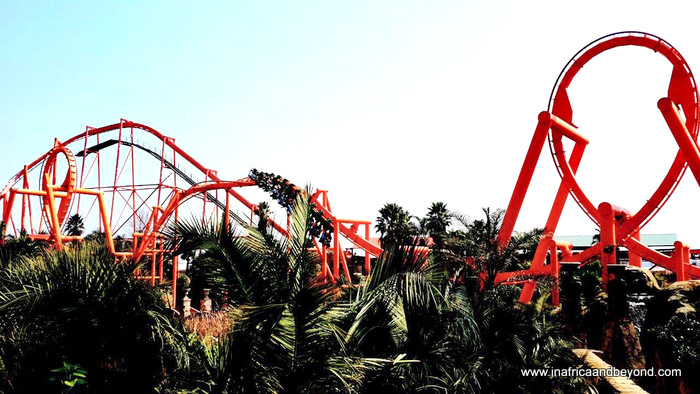Unknown Facts About Johannesburg North Attractions
Unknown Facts About Johannesburg North Attractions
Blog Article
The smart Trick of Johannesburg North Attractions That Nobody is Talking About
Table of ContentsA Biased View of Johannesburg North AttractionsThe 10-Minute Rule for Johannesburg North AttractionsLittle Known Facts About Johannesburg North Attractions.Some Known Factual Statements About Johannesburg North Attractions Not known Factual Statements About Johannesburg North Attractions More About Johannesburg North Attractions9 Easy Facts About Johannesburg North Attractions Described
You should keep security in mind and travelers should stay alert at all times when in unfamiliar surroundings. Talk with the locals when you are in town to discover the area you are remaining in. Johannesburg North attractions. When on the road (this does not apply to mall and various other protected atmospheres) best basic suggestions is to try your ideal to resemble a regional and to stay clear of displaying any kind of riches
The Facts About Johannesburg North Attractions Revealed
Teacher Revil Mason O. J. (Thomson, 1946) discovered the Witwatersrand's pre-colonial background. His historical work blew up the 'em pty land' myth, according to which the area was empty of human habitation before the arrival of European settlers. In his magazines Prehistory of the Transvaal: A Document of Human Activity (1962) and Beginnings of Black Individuals of Johannesburg and the Southern Western Central Transvaal Advertisement 3501880 (1986 ), Professor Mason demonstrated the extent of social and economic advancement in the location before Europeans set foot below.

About Johannesburg North Attractions
In 1878, David Wardrop discovered gold in quartz veins at Zwartkop, north of Krugersdorp. In 1881, Stephanus Minnaar came across gold on the ranch Kromdraai, near the Cradle of Mankind.
In March 1886, an outcropping (quickly to be called the Key Coral reef) was located, fairly fortunately, on Gerhardus Oosthuizen's ranch Langlaagte. Some claim that the Lancastrian coal miner George Walker uncovered this coral reef. One more itinerant English prospector, George Harrison (who had actually previously functioned in Australian mines) obtained a prospecting licence in respect of Langlaagte in May 1886.
He chose to carry on in a pursuit for greener pastures, and disposed of his Langlaagte claim for the baronial sum of 10. Alas: under lay the richest goldfield ever before located. The discovery of this rich auriferous reef provoked a gold rush that indicated the end of agrarian tranquillity in the southern Transvaal.
It would certainly, within 6 years, become the largest community in southern Africa. Within a years, it would make the Z. A. R. up until then an anarchical and insolvent little state the wealthiest nation in Africa. By the millenium, the Z. A. R. was to surpass Russia, Australia and the USA of America to come to be the globe's leading gold producer, producing greater than a quarter of the world's gold.
The Main Principles Of Johannesburg North Attractions
It was referred to as Ferreira's Camp, called after Colonel Ignatius Ferreira. He was a Boer adventurer upon whom the British authorities had actually bestowed the status of Buddy of one of the most Differentiated Order of St Michael and St George (qualifying him to the post-nominal letters C. M. G.) in gratitude for his role in the war that had actually deposed the Pedi king Sekhukhune in 1879.
Soon the camp was including tents and wagons as beginners got here daily from far and wide. By September 1886, some 400 individuals stayed in Ferreira's Camp, which soon flaunted prefabricated iron and hardwood structures. Two other camps were developed: Meyer's Camp on the ranch Doornfontein, and Paarl Camp. The latter was nicknamed Afrikander Camp; lots of people from the Cape Colony resolved there.

An Unbiased View of Johannesburg North Attractions
This name gained currency by word of mouth, such that the State Secretary verified the name to the Mining Commissioner on 9 October 1886. Stands in the village were auctioned on 8 December 1886. While some stands were cost 10, others were knocked down for as little as sixpence.
Two years later, these erven were to change hands for as long as 750 each. The tented camps diminished as a dorp of corrugated iron structures created and expanded north of the mines situated along Our site the Main Reef Road. Areas such as Jeppe's Community (where working-class immigrants erected their houses) and Doornfontein (where the affluent new 'Randlords' began to build their opulent residences) were quickly contributed to the ever-expanding map of the community.
The smart Trick of Johannesburg North Attractions That Nobody is Discussing
Apart from the road names, there were no indicators of Johannesburg being positioned in a Dutch-speaking country., nearly every person talked English and even the Federal government servants addressed one in English, unless they were first addressed in the Taal (or Low Dutch)'.
Britain had a passion in guaranteeing optimal conditions for gold production on the Witwatersrand, and that the gold was exported to London instead than Berlin an important made all the extra clamant by the Z. A. R.'s raising toenadering with Germany. Mine proprietors got on an accident program with President Kruger, whose plan of monopolistic concessions (commonly approved to his cronies) avoided mining companies from procuring materials of products (especially dynamite) and work by themselves, less expensive terms
Johannesburg North Attractions Fundamentals Explained
In 1890, this page the Volksraad had actually limited the franchise business to white men who had actually stayed in the Z. A. R. for fourteen years or longer, hence invalidating a lot of the immigrants (that took place to be the significant contributors to the fiscus). Frustration for the ballot was a mere pretext for advertising a various agenda; many uitlanders regarded themselves as short-lived visitors and had no purpose of continuing to be in the Z.
Report this page